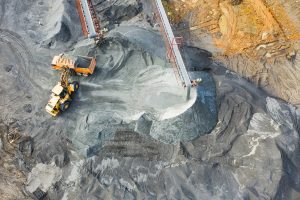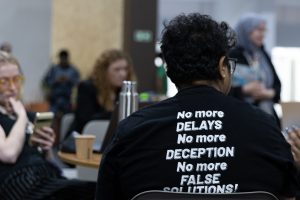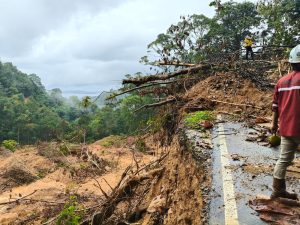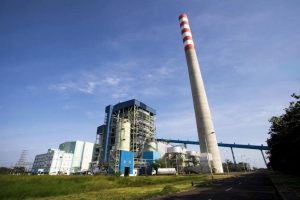Jakarta – Observers say Indonesia has yet to announce a clear direction for its energy transition policy. According to them, a decade after signing the Paris Agreement, Indonesia lags behind other developing countries in terms of action, strategy, and formal commitments.
“This is not just a matter of administrative delays. The failure to submit the SNDC (Second Nationally Determined Contribution) on time reflects confusion in the direction of national climate mitigation policy,” said Agung Budiono, Executive Director of CERAH Indonesia, in a written statement on Thursday, October 9.
The deadline for countries to submit their SNDCs to the UN Secretariat is September 30, 2025. However, as of that date, Indonesia had not yet submitted its new document. This is a sign, according to many, that damages the country’s credibility in the eyes of the global community.
Agung believes that the slow progress in drafting the document reveals a contradiction between rhetoric and reality. While the government continues to talk about energy transition and net zero emissions, Government Regulation (PP) No. 40 of 2025 on National Energy Policy (KEN) actually allows for the expansion of fossil fuels until 2060.
“If the national energy plan still gives coal a big role, how can the world believe in our climate commitment?” said Agung.
Climate ambitions stuck on paper
After ratifying the Paris Agreement in 2016, the government raised its emission reduction target in the updated NDC to 31.89 per cent independently, and 43.20 per cent with international support by 2030. The net-zero target was also set for “no later than” 2060.
Various policies have been rolled out, including the 2050 Long-Term Strategy for Low Carbon Development and Climate Resilience (LTS-LCCR 2050), the FOLU Net Sink 2030 program, and the national energy transition roadmap.
However, in practice, these efforts are caught in a major paradox because Indonesia is still heavily dependent on fossil fuels, especially coal. Until 2025, more than 60 per cent of the national electricity supply will still come from coal-fired power plants.
“As long as national energy policy continues to rely on coal as the backbone of the economy, decarbonization efforts will remain nothing more than a slogan,” said Nadia Hadad, Executive Director of the Madani Berkelanjutan Foundation, in a statement.
Nadia urged the government to immediately publish the SNDC before the UN Climate Conference (COP30) to be held in Belem, Brazil, at the end of this year.
“The SNDC is not just a formal document, but a reflection of the direction of Indonesia’s development — whether we are truly heading towards a climate-just future, or not,” he said.
Indonesia’s delay in drafting the SNDC is not only a matter of bureaucracy, but also reflects a deeper dilemma due to its economic dependence on fossil fuels.
The coal industry remains a major contributor to foreign exchange earnings and employment in many regions. The government also continues to implement a Domestic Market Obligation (DMO) policy, which keeps coal prices low for PLN.
On the one hand, this policy keeps electricity rates low. But on the other hand, it stifles investment in renewable energy. Electricity costs from solar and wind energy appear more expensive simply because coal is subsidised.
The Deep Decarbonization Pathways (DDP) report entitled “A Decade of National Climate Action: Stocktake and the Road Ahead”* confirms this. According to Henri Waisma, Director of the DDP Initiative, Indonesia is one of the countries that has failed to translate its long-term strategy into concrete cross-sectoral policies.
“Other countries have begun to overhaul their governance and accelerate technological transformation. But Indonesia is still stuck in the discussion phase,” said Henri.
Indonesia’s green economy potential is enormous. The DDP report estimates that if the energy transition strategy is implemented consistently, the green sector could create up to 1.8 million new jobs by 2030 — mainly in the fields of renewable energy, clean transportation, and sustainable resource industries.
However, this opportunity can only be realised if the government dares to take bold steps: eliminating dependence on dirty energy, strengthening climate financing, and sending clear market signals to green investors. (Hartatik)
Banner photo: Image generated by OpenAI’s DALL·E via ChatGPT (2024)















